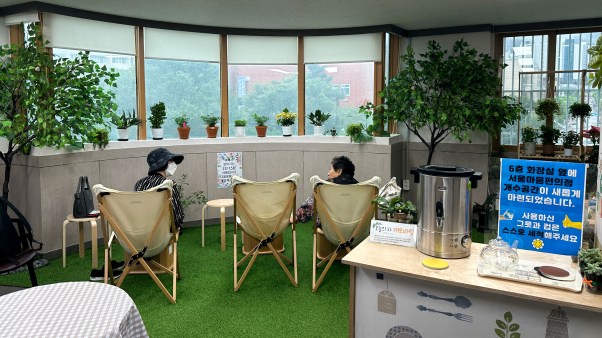Jeremy gets off the school bus a little after three, his bag of books, baseball cards, and gym shoes swinging at his side. He walks the block and a half to his house, stopping briefly to shoot baskets with a friend. When he reaches his door, he fishes a key out of his pocket, turns the lock, and enters the silence.
A quick foray of the refrigerator turns up a carton of ice cream, to which he helps himself. He got an A—on the science quiz today, and he’d like to tell somebody, but that will need to wait till later.
The immediate debate is homework versus a “Charlie’s Angels” rerun versus MTV. What did Mom say? Homework first, always. Well, okay. The tube was boring yesterday anyway. Jeremy spreads out his math at the kitchen table.
The phone rings. He jumps to answer it. “Hi, Mom!”
“Hi, Son. You got along all right today at school?”
“Yeah.”
“Good. When it gets to be five o’clock, turn the oven on to 425°, okay? We’re having pizza tonight.”
The call is soon over. Jeremy returns to his math, eventually getting stuck on a problem. Maybe Dad can explain it after supper.…
To some, the above scenario is an omen of family collapse in America; an outrage against the young, for whom adults are no longer willing to sacrifice. To others, it is merely the description of a boy growing up and learning to function independently. Whatever the opinion, it is a scene happening more and more frequently with every passing year of the 1980s. In many neighborhoods, latchkey children—a rarity no more than 15 years ago—are now the majority.
Firm figures are hard to come by, but estimates of how many U.S. schoolchildren come home to an empty house or apartment range from 2 million to 6.5 million and higher. Professor Lynette Long of Loyola College, Baltimore, and coauthor with her husband of The Handbook for Latchkey Children and Their Parents (Arbor, 1983), thinks it is more like 10 million, which would be almost a quarter of the nation’s school population.
The Department of Labor is certain of this much: 32 million children of all ages (infant through high school) have mothers who work outside the home. Thirteen million of those children are under age 14. While many of the mothers (or fathers) arrange their working hours to be home after school, many others do not, or cannot.
What is also irrefutable is that the latchkey legion is swelling steadily. Each year an additional 4 percent of the nation’s mothers take outside jobs in offices, stores, hospitals, factories—as well as churches, mission organizations, and Christian schools—so that now more than half the total are on payrolls. The parallel rise in latchkey statistics is nearly automatic.
How Parents Cope
“Telephones and televisions have made the latchkey arrangement possible,” says Professor Long. “The television is the baby sitter, and the telephone is the lifeline to Mom and Dad.” Most parents would not put it so bluntly; many, in fact, establish a firm list of commandments to organize their children’s after-school hours: Come straight home. No friends in the house. Do your homework. Stay away from the stove. Keep the doors locked. Don’t hassle your sister.
Older siblings are often charged with watching younger ones and, in some cases, doing housework such as laundry or dinner preparation.
The rules, however, do more to reassure parents than offspring, who say they sometimes feel like prisoners in their own homes. In one latchkey family, the younger children have dubbed the oldest brother “Adolf Hitler” for his supervisory role.
“I have nightmares a lot,” says a teenager named Debbie. “They’re usually about rats, but sometimes they’re about people trying to get into the house.” An eight-year-old named Danny in Oakland, California, says, “I don’t like it—especially in the winter when it gets dark and the wind blows.”
Danny’s mother, who has tried baby sitters but found them too expensive or unreliable, is not happy about the situation either. “Every day I pray that nothing will happen to him while I’m gone,” she says. “He’s mature for his age and very responsible, but there’s no getting around the fact that he’s only eight years old.”
On the other hand, a 12-year-old named Kevin says, “I wish my mom worked. Then I could play my radio as loud as I want without anyone yelling at me.” Debbie, despite her occasional nightmares about break-ins, told a Seventeen magazine writer, “I’m glad my mom works. She wouldn’t like staying at home, and I wouldn’t want to have her home if she was unhappy. Sometimes, when she’s home a lot, we both get a little edgy with each other and don’t talk to each other as much. Then we’re both ready for her to go back to work.”
Parental opinion, likewise, is split, depending on whom you talk to. A Los Angeles sales executive, a single mother, is proud of her ten-year-old’s growing maturity. “Kim has reached the point that she doesn’t want a baby sitter. She’s very responsible, and I trust her to obey my rules.”
Karla Braig of Dubuque, Iowa, remembers when she first left her three children to return to school. “I had so much guilt I could fry it up and serve it for supper.” But now that she is employed, she says, “There’s this myth that Mommy has to be tied to the stove so the children can spill their little guts every afternoon. Eventually, they learn that gut-spilling time is from 6 to 6:30 instead of 3:30 to 4 P.M.”
Others, however, are not convinced that their absence after school isn’t damaging. Something about that particular hour of the day seems special, a time for the young to let down their defenses after seven hours of social combat, to relax in the protection of a grown-up who has always been their refuge. Conversation somehow flows more freely; joys and disappointments both are nearer the surface.
“You can’t expect a child to go home by himself for several hours every day and not feel abandoned and frightened,” says John Yunker, director of guidance services in a suburban school district outside Saint Louis. “They suffer from a lack of adult contact and a lack of security.”
The hazards are not only internal—loneliness, boredom, fear—but practical as well. One out of six calls to the Newark fire department involves children alone at home. There is also the fact that surveys show the back seat of a car is no longer the prime site for teen intimacy; it is the girl’s home when parents are away. That’s why in one family, the 10-year-old boy may have as many friends over after school as he likes, but his 15-year-old sister may have none.
Says Vance Packard in his 1983 book Our Endangered Children (Little, Brown), “Whereas parents used to worry about what their children were up to when out at night, today … they are more likely to worry about what the youngsters are up to in the late afternoon when so many houses are empty of adults.”
A girl named Rachel is quoted in The Gilmartin Report (Citadel, 1978): “I have the whole house to myself when I come home from school.… So Bob and I just make ourselves comfortable. A lot of times we just study together. Sure, we have sex a lot. But I think that is only natural.”
Ultimately, the parents arrive home at day’s end, but that does not necessarily signal the end of problems. Says one Florida mother, “My daughter has her rules and a list of chores to do, and mostly they get done. But when I get home and find a mess in the kitchen, I wind up screaming. Who needs that after working all day?”
Three Causes
Most observers of the latchkey scene identify the same trio of reasons why the phenomenon has increased and is likely to keep growing:
1. More divorce, which results in more households led by single parents—not all of whom are able to arrange substitute care while they work. The U.S. divorce rate rose from 2.2 per thousand in 1960 to 5.3 in 1981, so that one of every six children under 18 now lives in a single-parent home. (Whether the 1982–83 reprieve in the divorce rate will become a new and welcome trend remains to be seen. Perhaps the worst is over; but then again, some analysts say it was only a temporary lull due to the recession. Divorce proceedings cost money.)
2. Hard times/welfare cutbacks. The need in some homes for two incomes has risen in recent years as inflation has sucked up more family dollars, and governments have handed out less. Fifteen percent of all Americans are now officially classified as poor, the highest in 17 years. In a tightened market, jobs traditionally held by women have been somewhat easier to find than those held by men. Thus, more and more mothers have gone to work to ward off privation, make ends meet, or save up for kids’ college bills.
3. Desire. The third group of mothers work outside the home not because they must but because they wish to. This group now runs as high as 67 percent of the total, says pollster Daniel Yankelovich, who adds, “Norms affecting whether a wife should work outside the home have reversed themselves within a single generation.” Three-fourths of the population in 1938 frowned on the idea if the husband was capable of supporting the household. In 1978, three-fourths approved.
“Whereas in the past it was mainly blue-collar women who worked for pay,” he continues, “now it is the better educated, upper-middle-class women who increasingly work outside the home.” A corollary finding is that 66 percent of those polled feel “parents should be free to live their own lives even if it means spending less time with their children.”
New Attempts To Help
Relief for latchkey distress has sprung up in recent years from several quarters. Some companies, recognizing that a worried employee is less productive, have begun offering flextime arrangements, designing jobs that can be done at home (occasionally using remote computer terminals), or running their own day-care centers on the premises. Ralston Purina in Saint Louis is one such firm that provides space for kids after school; a franchiser handles supervision. In Burbank, California, three neighboring companies—NBC, Walt Disney Studios, and Saint Joseph Medical Center—have gone in together on a joint children’s center.
Schools have begun doing likewise—sometimes in self-defense, to curb after-hours vandalism. The School-Age Child Care Project at Wellesley College studied 125 programs in 33 states, some run by educators, others by parent groups, using school buildings in the late afternoons for a mix of recreation, craft projects, snacks, and music activities. Planners, they found, have to build in enough structure to maintain control but not so much that the child feels as if he is still in school. (One vital key to these programs: the good will of the school custodian!)
A Portland, Oregon, program run by the YMCA was credited with cutting vandalism at three schools from $12,000 one year to $200 the next.
In at least two regions, telephone hot lines for latchkey children have sprung up. “PhoneFriend” in State College, Pennsylvania, averages 45 calls a week between 2:30 and 5:30 P.M. from kids needing help with homework, worried about Mom being late, or feeling lonely. One troubled boy was looking in a closet for his boots when he ran across the family Christmas presents. Another wondered what to do with a sick dog. The volunteers who answer the phones—Penn State students plus some moms—say there are few emergencies, but all deserve attention. Some youngsters seem to call and then hang up, just to make sure PhoneFriend is working. (For an information kit on organizing such a service, write: PhoneFriend Committee, AAUW, State College Branch, P.O. Box 735, State College, Penn. 16801.)
“Kids Line,” in a northwest white-collar suburb of Chicago, averages more than 500 calls a month. Its 140 volunteers have received intensive training from psychologists, psychiatrists, and social workers on everything from depression to drug abuse.
The one resource that often is not eager to volunteer her services is the stay-at-home neighbor—simply because her numbers are dwindling, and she can unwittingly become the unofficial “block mother” in charge of all first-aid problems and peer squabbles. In a recent “My Turn” column in Newsweek, Judy Paris registered her protest: “Often, during the daylight hours, mine is the only car remaining.… Since I am home anyway, my phone number is frequently listed on school records as a backup in emergencies.…
“I am not condemning mothers who work outside the home, whether through choice or need. They know and all of society must understand that a very real problem exists that needs immediate solving … because the lady down the street is not the answer.
“Who is this lady down the street? Probably she is the last of a tradition in transition. What she is not is lucky, lazy, or bored. Neither is she a doormat or drop-off place for your child.”
Facing The Tradeoffs
Social psychologists and other scholars continue their study into the long-term effects of latchkey living, trying to assess its relative merits and drawbacks. A government report in Children Today says location makes a big difference: “In a rural area that is relatively crime-free, latchkey children are not any more or less socially and academically adjusted and fearful than children who are regularly supervised by an adult.… In contrast, negative experiences for latchkey children have been demonstrated in inner-city areas.” In other words, the farm kid who comes home and starts his chores in the late afternoon is far different from the Phoenix child whom U.S. News & World Report found patrolling the house “with a baseball bat in one hand and a shoe in the other, checking the windows every 15 minutes to watch for intruders.”
The National Academy of Sciences says whether the mother works outside the home has little, if any, effect on children’s grades. However, University of Michigan professor Selma Fraiberg, whose specialty is child psychoanalysis, is not convinced. She is especially dubious about government’s involvement in what she calls “the child care industry.” In her book Every Child’sBirthright: In Defense of Mothering (Basic, 1977), she talks about “the Looking Glass World of Day Care in which hundreds of thousands of mothers on welfare take care of the children of hundreds of thousands of working mothers and other mothers on welfare, while hundreds of thousands of women take care of the children of the mothers who are taking care of the children of mothers on welfare and other mothers.”
Then she adds, “(If this sentence causes dizziness, I recommend that it be read slowly as you turn. With each full rotation, fix your eyes on a distant point. I myself use the dome of Capitol Hill.)”
A colleague of hers, Harold Shapiro, notes the economic peculiarities: “When everyone is taking care of their own children, none of this important activity is counted in the GNP. When everyone is taking care of each other’s children, it is all counted. This accounting convention makes it appear as if something new, different, and better is going on when, in fact, the opposite might very well be the case.”
The truth is, scholars do not know enough to draw summary conclusions based on research. James Garbarino, writing in Vital Issues, sums up the information so far: “No social event affects all children or youth equally.… Thus, we know that some children will thrive on the opportunity of being a latchkey child. Others will just manage to cope. Still others will be at risk, and still others will be harmed.”
The Church’S Response
In recent times, church pronouncements on the subject have gradually quieted down, and the earlier insistence on women staying home has ebbed to a whisper. That is partly because the Christian community, like government, has vested interests; it needs women to be church secretaries, college dorm mothers, camp cooks, and, of course, full-time pastor’s wives. So preachers hesitate to stand on Sunday morning and push for full obedience to Titus 2:5.
However, at the same time, church leaders have begun to worry about the weakening of the Christian home, particularly agonizing over offspring who flagrantly rebel against their heritage. More than one pastor has wondered if the institution has not helped create its own nightmare by wooing mothers away from responsibilities at home.
One person who does not equivocate is twice-widowed Elisabeth Elliot Gren, well-known author and speaker. She recently told interviewers from Commonlife, “When people say to me, ‘Why are you always telling young mothers to stay home?’ I say because the Scripture commands me as an older woman to tell younger women to stay home. In the second chapter of Titus it says that older women are to school younger women to be loving wives, to be loving mothers, to be temperate, chaste, kind, busy at home or domestic, and to respect the authority of their husbands.”
What about Christian women who already work? “The first thing I ask is if they are sure they have to work outside the home, because far too many mothers are working for reasons other than genuine economic necessity: social pressure, ambition, boredom with housework, the unwillingness to do the humble task of staying home, the desire for something exciting (what the world calls fulfilling), prestige. And I ask young women to settle the question of whether they have a genuine economic necessity. Only they and God can answer that. I can’t.
“If it is, in fact, an economic necessity, then I still am not sure they have to work outside the home.” (Elliot, in an extreme situation, look her young daughter, Valerie, “to work” with her among Ecuador’s Auca Indians after the murder of her husband, rather than returning to a more conventional livelihood in the United States.)
Focus on the Family, the James Dobson radio ministry, published a booklet last February entitled Working at Home: Ways to Supplement Family Income. It sketched out 25 ways to earn cash under your own roof, from custom typing to running an answering service to stripping furniture to fixing broken dolls. The ideas, extracted from a book called 555 Ways to Earn Extra Money (Jay Conrad Levinson; Holt, Rinehart and Winston, 1982), offered a range of possibilities for mothers needing or wanting to supplement the family income.
A trio of mothers in the Washington, D.C., suburbs, all college-educated, formed a support organization last year called Mothers at Home and began a 24-page monthly newsletter, Welcome Home. “I have working friends who say my mind is too good to stay home,” says Linda Burton, mother of two. “I decided my mind was too good not to stay home with my children. The best minds are required there.”
When a wire service story on the group appeared last December, inquiries skyrocketed. The AP reporter was repeatedly phoned at home to get the group’s address; eventually Burton and her colleagues installed a recorded message to handle the volume ([1–703] 352–2292). More than 5,000 letters poured in within six months, and subscriptions mounted to 2,500 with no promotion. The mothers appeared on the “Phil Donahue” show last March and testified before a House Select Committee on Children, Youth, and Families in early April.
The three founders, though church attenders, do not want their group dubbed religious. They have taken no position on ERA, for example. They simply mean to encourage women who choose not to take employment outside the home and assure them they’re not odd.
Meanwhile, other Christians are turning their attention to relief for those children already in latchkey situations. While many churches offer after-school care in their buildings, at least one church takes its ministry to where the latchkey children live. Wheaton (Ill.) Bible Church’s “Sidewalk Sunday School” is a three-afternoons-a-week outreach to a nearby apartment complex that teems with unsupervised children. The entire ministry is led, staffed, and funded by the church’s high school department.
“High school kids are the perfect resource to minister to latchkey kids,” says Ridge Burns, youth pastor, “because their schedules mesh. Here are all these children running loose after school—and here are all our senior highs wondering what they can do for God now that the two-week summer mission trip is over. We poured all that training into them for two weeks in Appalachia—why not put it to use here at home instead of letting them stagnate?”
A dozen church teens meet the school bus when it unloads in front of the apartments. They kick soccer balls with the children and play games on the grassy area until 4:30, when they begin an hour of singing, a Bible story, crafts, and prayer. During cold weather, they meet in the apartment the group has rented for $380 a month. (Two single adults occupy it in order to meet regulations.) In warm weather, the activities stay outdoors. At 5:30, the teens walk the children to their individual apartment doors, then return to clean up.
Inland Real Estate Corporation, the landlord, credits “Sidewalk Sunday School” with cutting vandalism by 90 percent. Their main problem before was simply kids using the hallways for a bathroom. Now, everyone knows the church’s apartment is open and available if you get locked out of your own.
More than 50 church teenagers are involved in the program, assigned to various days. They remember the children’s birthdays and listen sometimes to accounts of shocking abuse at home. “The missiologists talk about reaching hidden people groups,” says Burns. “Here they are!—a mile and a half from Wheaton Bible Church. They just happen to be 10 years old and under.” He hopes someday to start a branch church in the complex, which has a large concentration of Southeast Asians trying to get an economic toehold. “This is the best thing our youth group has ever done.”
Such cases affirm the undeniable fact that children cannot raise themselves. Unlike robins and rabbits, who fare well enough within weeks of birth, the human young require love and nurture from older care givers for at least a decade and a half. They must be near the top of someone’s agenda if tragedy is to be forestalled.
Thus, Christian parents (male and female) must assess their lifestyles in light of their confession that sons and daughters are gifts from above. The conclusions may not be the same for everyone, especially if financial hardship is a factor. But the questions must be faced regardless. And all Christians may well ask if the latchkey children in their communities do not constitute a new kind of victim on the road to Jericho, wondering if the religious passersby will notice the fear in their eyes.
Tim Stafford is a free-lance writer living in Santa Rosa, California. He is a distinguished contributor to several magazines. His latest book is Do You Sometimes Feel Like a Nobody? (Zondervan, 1980).










